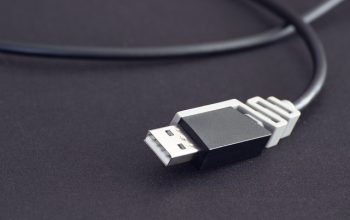Navigating the vehicle title transfer process can be daunting for new vehicle owners. This article demystifies the steps involved in transferring a car title, offering clarity on the varying DMV title transfer requirements across different states, as well as the associated title transfer fees and costs within the US. Whether you’re purchasing a new or used vehicle, understanding the essential actions ensures a seamless ownership change. We’ll guide you through each step to facilitate a smooth transition and avoid potential penalties or delays. Follow our tailored steps and checklist to effectively transfer your car title post-purchase.
- Navigating the Vehicle Title Transfer Process: Essential Steps for Seamless Ownership Change
- Understanding DMV Title Transfer Requirements Across Different States
- Title Transfer Fees and Costs Variations in the US: What You Need to Budget
- Step-by-Step Guide: How to Transfer a Car Title Post Purchase
- Key Considerations for Smooth Title Transfers After Used Vehicle Acquisition
Navigating the Vehicle Title Transfer Process: Essential Steps for Seamless Ownership Change

When transitioning vehicle ownership, understanding the vehicle title transfer process is paramount. This critical administrative task involves several steps that ensure legal and proper transfer of car registration and ownership. The first step is to complete the necessary forms provided by your state’s Department of Motor Vehicles (DMV). These forms serve as a formal request for the title transfer after car purchase and must be filled out accurately to avoid complications or delays. Once the forms are submitted, you must present the required documentation, which typically includes proof of insurance, a valid photo ID, and the current vehicle registration. Additional documents may be needed, such as a bill of sale or odometer disclosure statement, depending on the state’s DMV title transfer requirements.
After submitting the application and supporting documents, the next phase involves addressing the title transfer fees and costs associated with the process. These vary from state to state, so it’s essential to be aware of the specific amounts you will need to pay. The fee structure can include a transfer tax, titling fee, registration fee, or a combination thereof. To expedite the process and avoid any potential penalties, it’s wise to review your state’s DMV title transfer guidelines beforehand. Utilizing a DMV title transfer checklist can greatly assist in ensuring all steps are followed in order, making the transition from seller to buyer as seamless as possible. This proactive approach not only simplifies the vehicle title transfer process but also confirms that you are complying with state laws and regulations, leading to a smooth ownership change.
Understanding DMV Title Transfer Requirements Across Different States

Navigating the vehicle title transfer process across different states involves understanding the distinct requirements set forth by each Department of Motor Vehicles (DMV). Prospective car owners must familiarize themselves with the DMV title transfer requirements specific to their state of residence. These necessities typically include the submission of the current title, proof of vehicle purchase, a completed application form for title transfer, and the appropriate title transfer fees and costs. The specifics can vary significantly; for instance, some states may require a VIN inspection or an odometer disclosure statement, while others might have different age-of-residence criteria to establish domicile. It’s crucial to consult the DMV of the state where the vehicle will be registered to ascertain all necessary steps and associated fees, as these can impact the timeliness and legality of the transfer.
To ensure a seamless title transfer after car purchase, one should prepare in advance by gathering all required documentation. This includes the previous title if available, a bill of sale, identification, and proof of insurance or intent to insure. Additionally, be aware that title transfer fees and costs are not universal; they can differ from state to state. Some states may offer online transactions for added convenience, while others require an in-person visit to a DMV office. By utilizing a comprehensive DMV title transfer checklist tailored to your state’s regulations, you can expedite the process and minimize potential delays or penalties associated with late transfers. This proactive approach not only safeguards your rights as a new vehicle owner but also ensures compliance with local and state laws, facilitating a smooth transition of car ownership.
Title Transfer Fees and Costs Variations in the US: What You Need to Budget

When navigating the vehicle title transfer process in the United States, it’s crucial to account for the varying DMV title transfer requirements across different states. Each state sets its own regulations and fees for transferring a car title after purchase, which means budgeting for these costs is an essential part of the process. Typically, you can expect to pay a mix of state-specific transfer fees, documentary stamps, and possibly sales tax based on the purchase price or the assessed value of the vehicle. These Title transfer fees and costs are subject to change, so it’s important to check with your local DMV for current charges. To ensure a smoother transaction, prepare all necessary documentation, including proof of ownership, identification, and any required liability insurance information, as well as the appropriate forms for a DMV title transfer. Additionally, be mindful that if you’re purchasing from a private party, you may need to provide a Bill of Sale and potentially have the vehicle inspected. By being well-informed and having all your paperwork in order, you can expedite the transfer process and avoid any unnecessary delays or penalties. Whether you’re buying your first car or adding a new vehicle to your collection, understanding the DMV title transfer requirements and associated fees is key to completing the transaction efficiently.
Step-by-Step Guide: How to Transfer a Car Title Post Purchase

Transferring a vehicle title post-purchase is a critical step in the process of registering your new vehicle in your name. The vehicle title transfer process begins immediately after the sale and requires adherence to specific DMV title transfer requirements that differ from state to state. To navigate this process successfully, start by completing the necessary paperwork, which typically includes the application for a certificate of title along with any bill of sale or proof of purchase documentation. Ensure you have the previous owner’s information and the current vehicle title. Next, visit your local Department of Motor Vehicles (DMV) or use their online services if available, to submit these documents. The DMV title transfer requirements often necessitate a photocopy of your driver’s license, proof of insurance, and payment for the title transfer fees and costs, which are regulated at the state level. These fees can vary significantly, so it’s important to check with your local DMV beforehand to avoid any surprises. The exact amount you’ll need to pay depends on factors such as the type of vehicle, its weight, and where you reside. Upon successful submission and fee payment, the DMV will process your application and issue a new title in your name. Keep all documentation organized and complete each form accurately to expedite this process and avoid any potential penalties or delays. Remember to keep track of the progress with a DMV title transfer checklist to ensure all steps are completed in order.
Key Considerations for Smooth Title Transfers After Used Vehicle Acquisition

When acquiring a used vehicle, navigating the vehicle title transfer process is a critical step to ensure legal ownership. A smooth transfer hinges on understanding and adhering to the DMV title transfer requirements specific to your state. These requirements typically include completing the appropriate forms, providing proof of ownership such as the previous title, submitting a bill of sale, and paying any applicable title transfer fees and costs, which can differ significantly from one state to another. It’s crucial to initiate the transfer promptly after purchase to avoid potential penalties or delays in registration. To facilitate this process, it’s advisable to gather all necessary documentation ahead of time. This includes the vehicle’s current title, a valid photo ID, proof of insurance, and any required emissions or safety inspections. Additionally, be prepared to pay the specific fees associated with the transfer, which may include titling, registration, and documentary stamps. Utilizing a DMV title transfer checklist can serve as an invaluable resource, ensuring all steps are completed in order and nothing is overlooked. By staying organized and informed about the requirements for your particular state, you can streamline the vehicle title transfer process post-car purchase and establish clear, legal ownership of your new vehicle.
Navigating the vehicle title transfer process can be an intricate task for new vehicle owners. This article has outlined the essential steps, varying DMV title transfer requirements across different states, and the associated title transfer fees and costs to budget for. By utilizing a comprehensive DMV title transfer checklist, individuals can ensure a smoother transition of ownership, avoiding potential penalties or delays. It is clear that understanding the process and preparing in advance are key to a hassle-free experience when transferring a car title after a purchase. With the right resources and knowledge, the title transfer after a car purchase becomes a more straightforward endeavor, ensuring legal compliance and peace of mind for vehicle owners nationwide.



